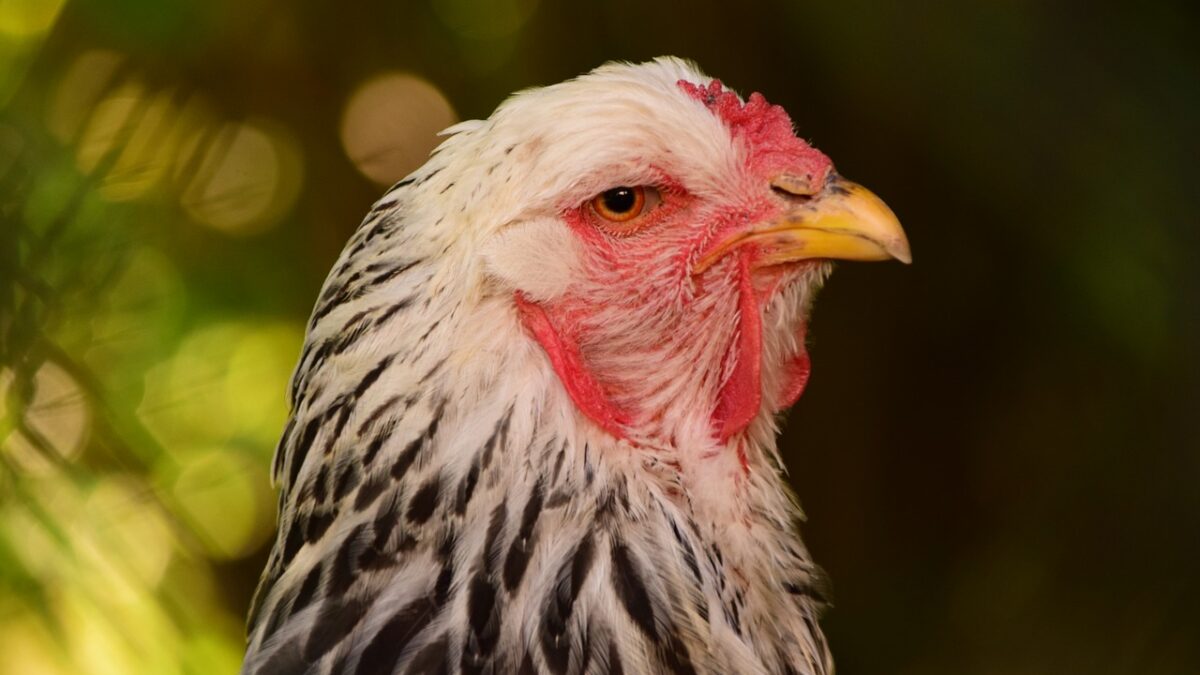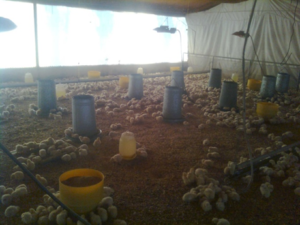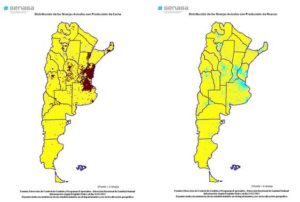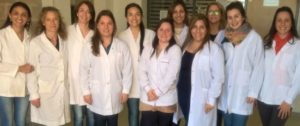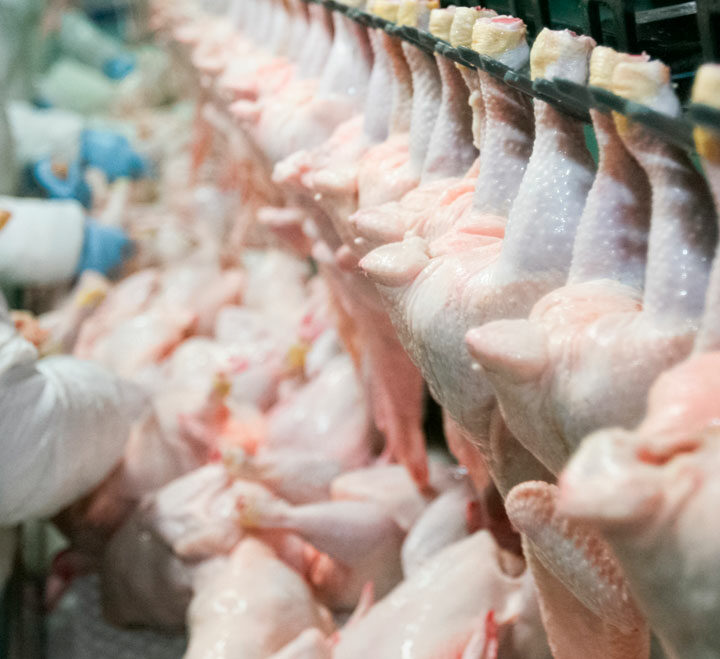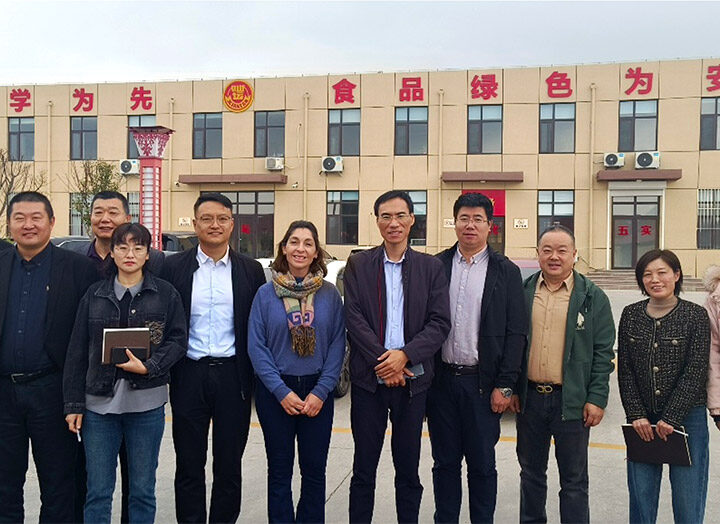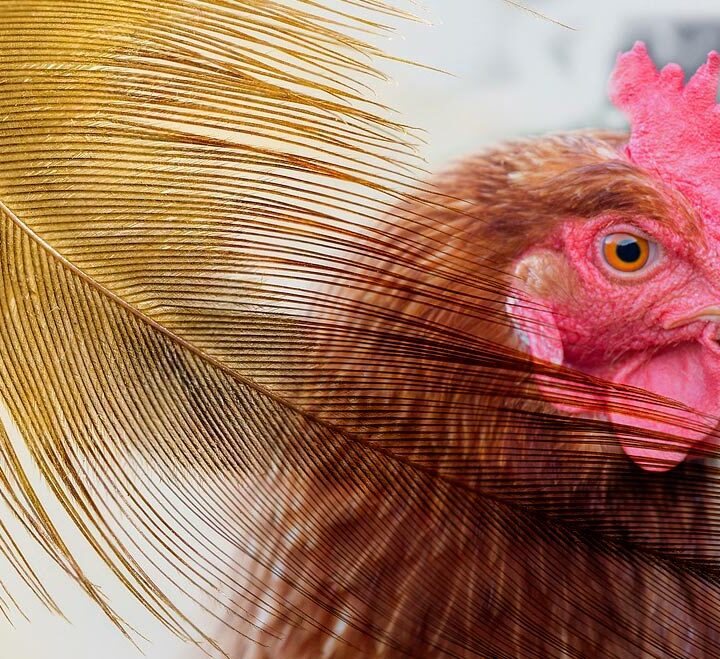
Minervet participates in the Symposium of INTI
8 de November de 2016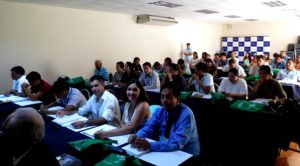
Minervet participates at I International Poultry Course
15 de February de 2017The poultry production of meat and egg in Argentina has shown a big growth during the last years because of increase of the consumption of products and sub-products derived from the meat of chicken.
The constant change of a demand of choosing beef, which is the most consumed in our country, has been generated by an increase of prices that resulted from the lower supply of cattle due to the loss of land that was intended for breeding and are now used for massive soybean planting.
Economic issues have led consumers to look for other options for their daily consume and this is how the chicken and pork have become the products with the biggest consumption and appearance in the supermarket shelves.
Chicken consumption increased from 20 kg / person / year in 2000 to 44 kg for now. The domestic market for poultry has practically reached its top and there is little room for expansion of domestic consumption. USDA forecasts 16% growth by 2017 that will be based on the opening of new export markets.
Despite the growth of the demand for chicken protein as part of the population’s diet there were made an important investments in the poultry sector aimed to technological improvements, genetics, animal welfare, health and nutrition, which contribute to the development and intensification of the activity.
Traditional farm in the Province of Mendoza
Within the poultry chain, not only the primary sector shows improvements. At industrial level the processing plants seek to obtain a product of maximum quality and safety. For this reason the activities of work and elaboration are betting to include new technologies, extreme quality controls and sanitary. An example of this is the control over residues and contaminants that exceed the values allowed in the meat made by national inspection bodies (CREHA plan) in order to take care of the health of the consumers, to punish the noncompliance of current regulations and to maintain the open market for the export of product produced in Argentina.
At the country level the main poultry areas are located in the provinces of Buenos Aires and Entre Ríos, in agreement with the areas producing cereals and oilseeds, the food bases. Then follow Santa Fe, Cordoba, Mendoza, Rio Negro, Salta and Neuquén.
In the province of Entre Ríos 45.2% of the country’s farms are located 33.5% in Buenos Aires and the rest is distributed in Santa Fe 6.25%, Córdoba 6.61%, Mendoza 1.8 % and other provinces.
The following graphs provided by the National Service of Health and Food Quality (SENASA) shows the distribution of egg and meat farms in Argentina.
Feeding of the birds is one of the inputs with the greatest impact on production. Intensive breeding systems, species limitations and the ingredients that make up the diets determine the need for extreme control measures in order to efficiently feed with nutrients and convert them to meat or eggs.
These breeding systems require special attention to animal welfare, health and nutritional factors to minimize the losses generated by farm mortality.
For a long time and till now, one way of maintaining health status on farms has been the use of feed additives, specifically administration of preventive and growth promoting antibiotics that have shown multiple economic benefits for poultry farmers.
The worldwide trend towards the prohibition and withdrawal of antibiotics has gained weight and also reaches our territory. There is evidence that these drugs cause increased antimicrobial resistance in human medicine. Foods of animal origin may contain traces of drugs that are incorporated into the human body and promote the onset of resistance. In addition, the indiscriminate administration of growth promoters promotes the emergence of resistant strains in animals that could be transmitted to humans by direct or indirect contact.
There is a new alternative for the administration of additives that involves compounds of natural origin that have been represented by probiotics, prebiotics, enzymes, organic acids and plant extracts that propose to replace the use of antibiotics.
Through the Ministry of Science and Technology and through the Expansion project of the European joint programming initiative on resistance to antimicrobial drugs (EXEDRA), Argentina is the only Latin American country that integrates this global initiative.
The European Union launched the Joint Programming Initiative on Antimicrobial Resistance (JPIAMR) and proposed a global approach with the coordination and financing of member countries.
Coordinated by the Swedish Council, the Ministry of Science, Technology and Productive Innovation is the only Latin American partner to work with other institutions in France, Romania, Germany, Israel, Spain, the United Kingdom, Poland, the Netherlands, Canada and Argentina. Collaborate within the HORIZON 2020 program, the eighth framework program of the European Union for research and innovation.
Asia and Latin America are on the list of countries where antimicrobial resistance results, since there is indiscriminate use and lack of control by government agencies. It is then intended to generate national plans in all the countries of Latin America and articulate them.
The change has been established in Latin America and it is now possible to find information on studies based benefits of use of natural additives in countries such as Cuba, Peru, Chile, Argentina, and Brazil, among others.
At the scientific and technological fairs and congresses held during the year 2016 the clear trend towards the use of these technologies in animal nutrition applied to different types of livestock farms (aquaculture, cattle, swine, and poultry) could be observed.
We consulted a group of CONICET researchers who work within the Department of Microbiology and Immunology of the Faculty of Exact Physical and Chemical Sciences of the National University of Río Cuarto to use this type of additives in our country. According to this source, local poultry farmers are aware of the benefits of using additives, but only medium and large scale producers are allowed to access small producers because of the high costs. Among the products that are already being used are mycotoxin composed of inorganic or chemical adsorbents and yeasts containing active enzymes plus a complex of amino acids such as selenium.
This research group has worked on yeast (living and dead) walls of yeasts and bacteria (living and dead) isolated from different backgrounds (pigs and broiler chickens). In vitro studies evaluated the adsorbent capacity of mycotoxins and their probiotic capacity, in vivo experiments were performed to verify the effects of their application in the different diets. In general, the results of the addition of these natural additives alone or in combination with the broiler and pig diets were very positive as improvements were observed in the health status, production parameters and the animal immune system. It also provides benefits to the animal through its incorporation as the use of pharmacological or chemical agents reduced with its transfer to animal by-products.
Despite proven benefits and a clear global change there is still no legislation in Argentina on the use of natural products.

